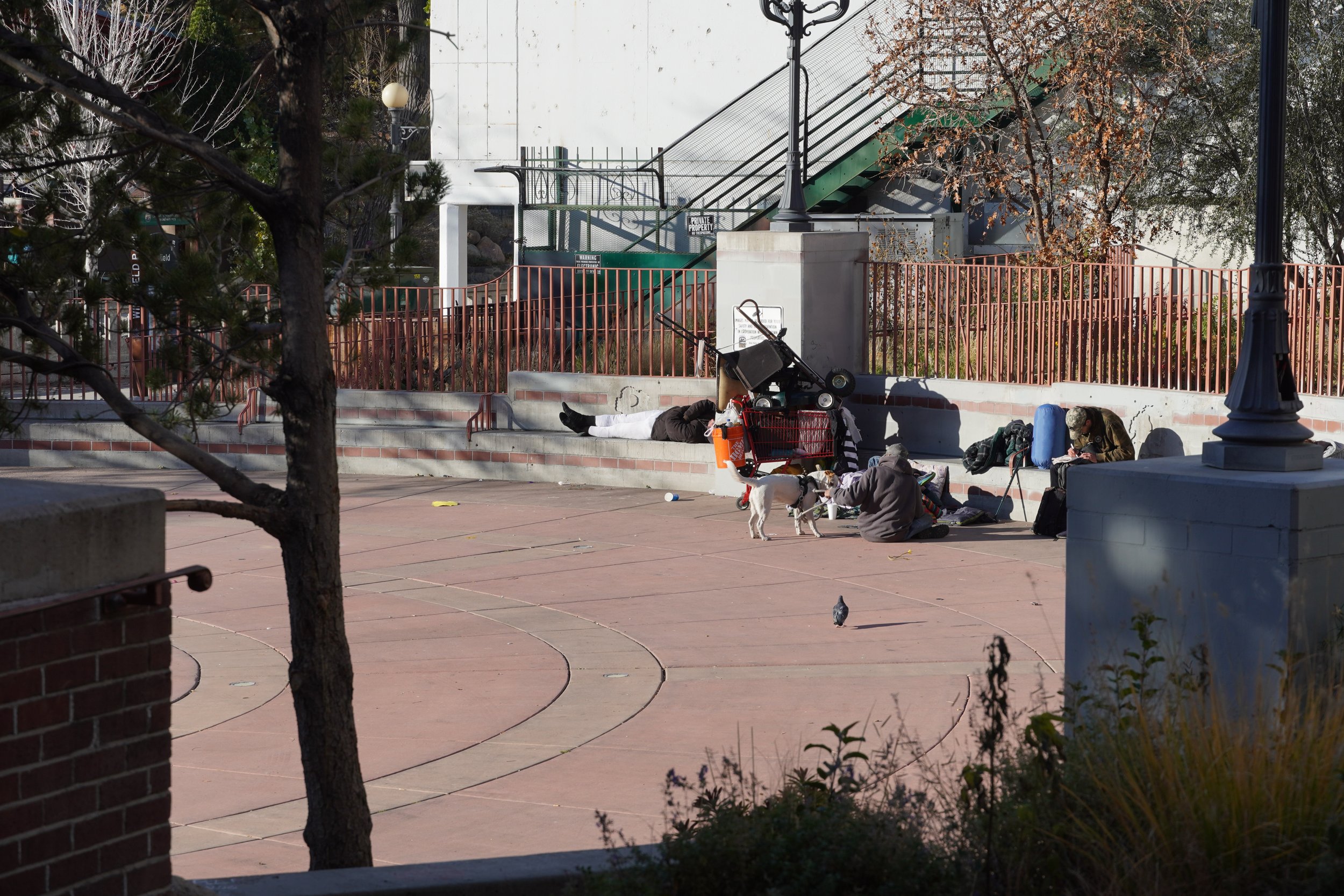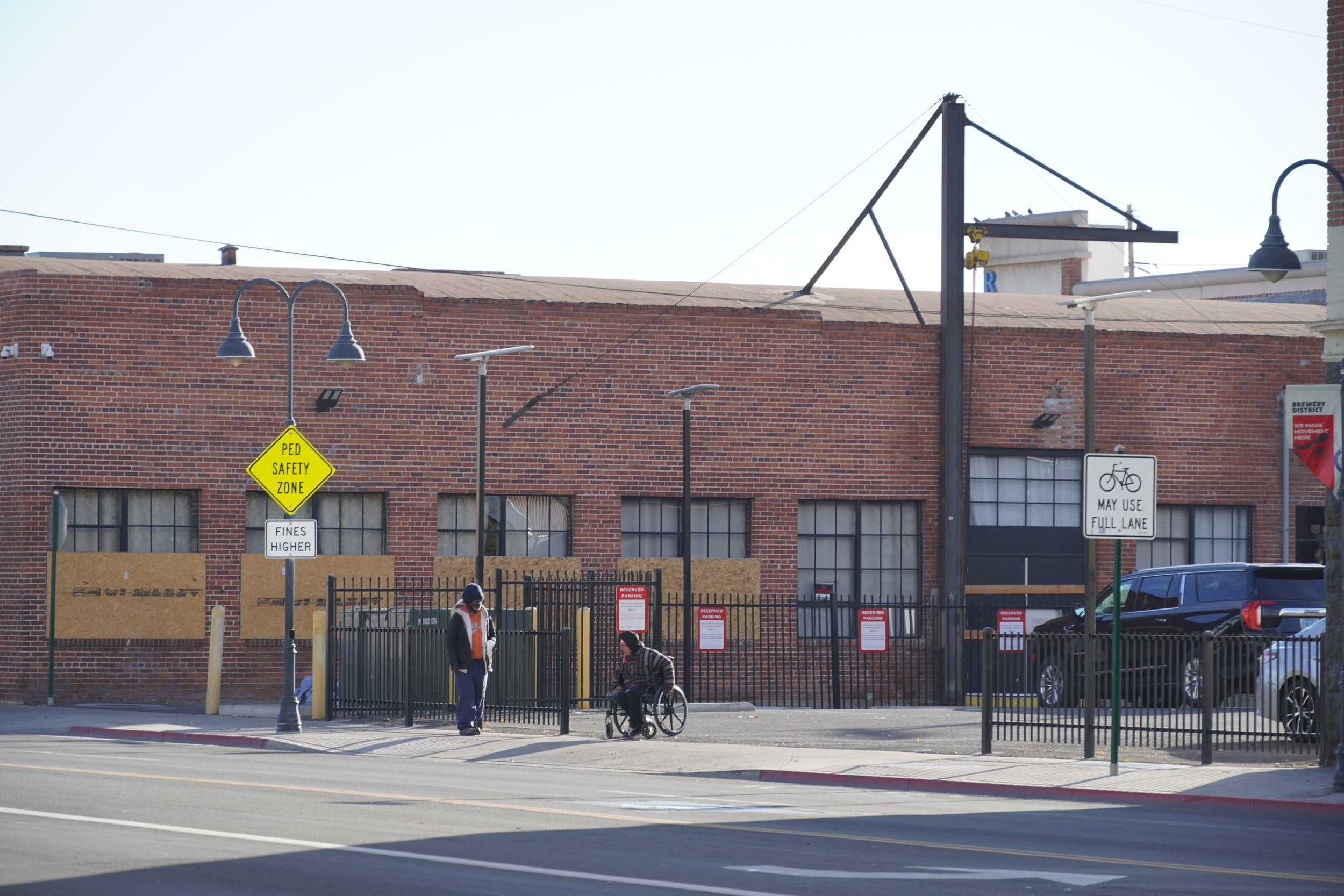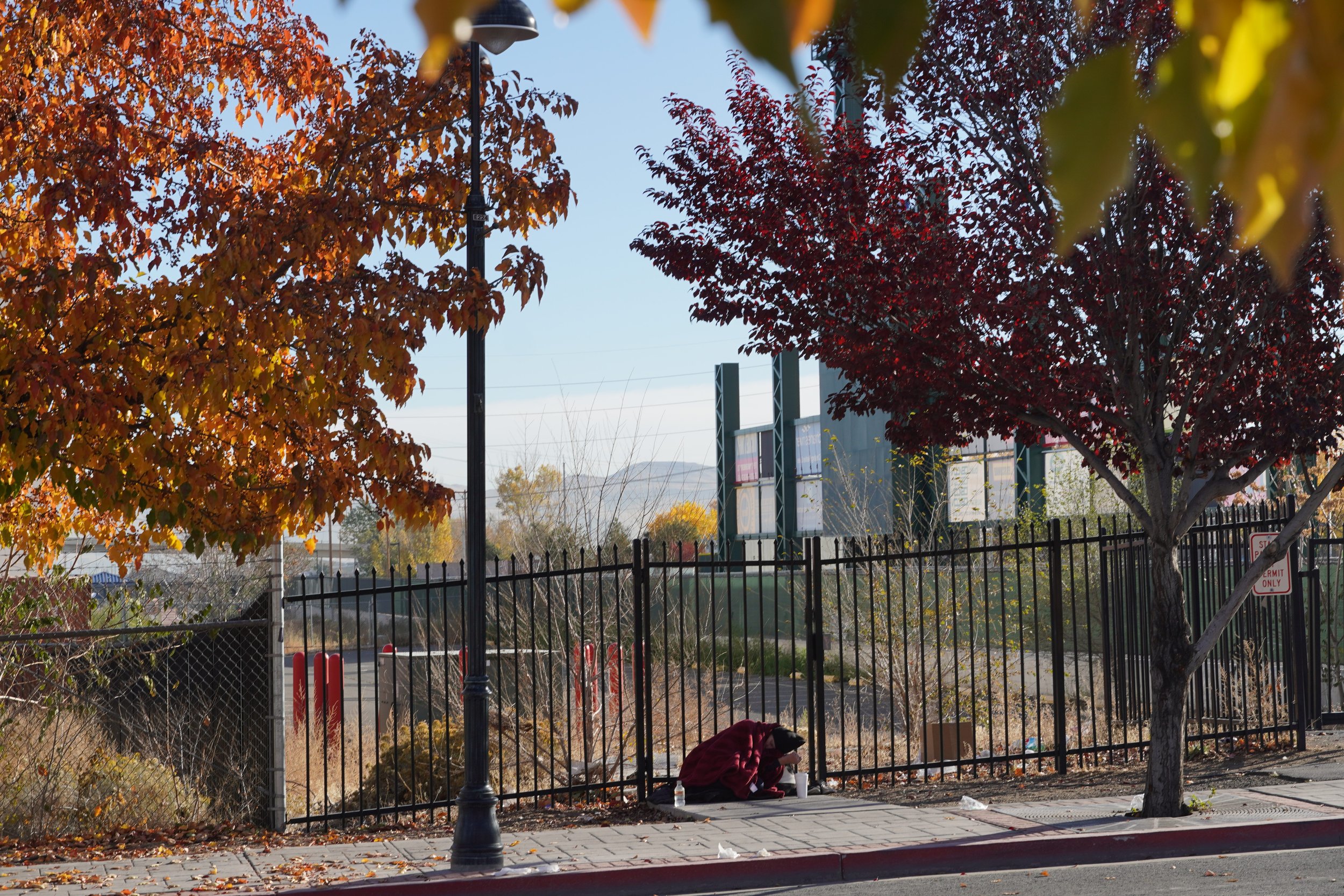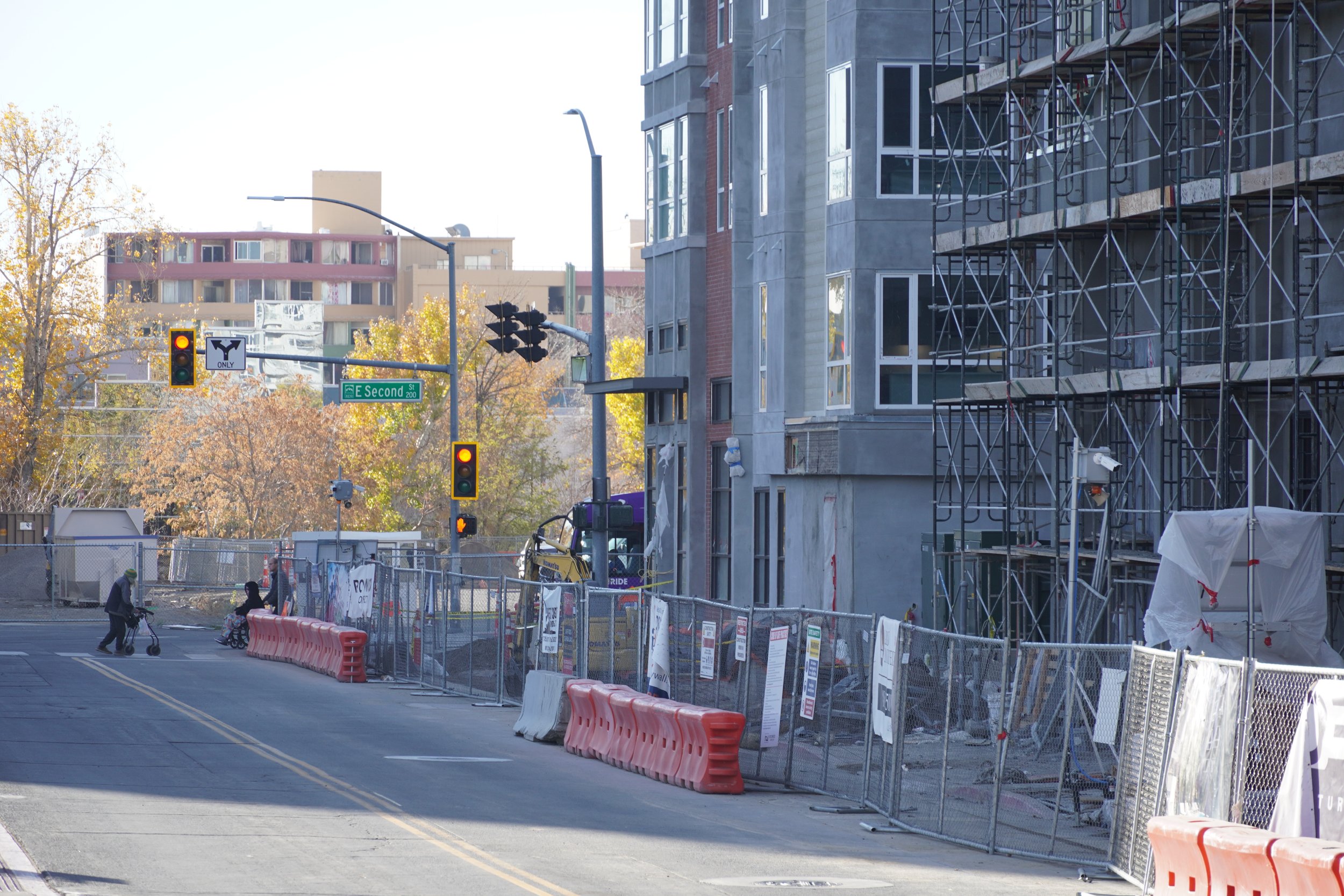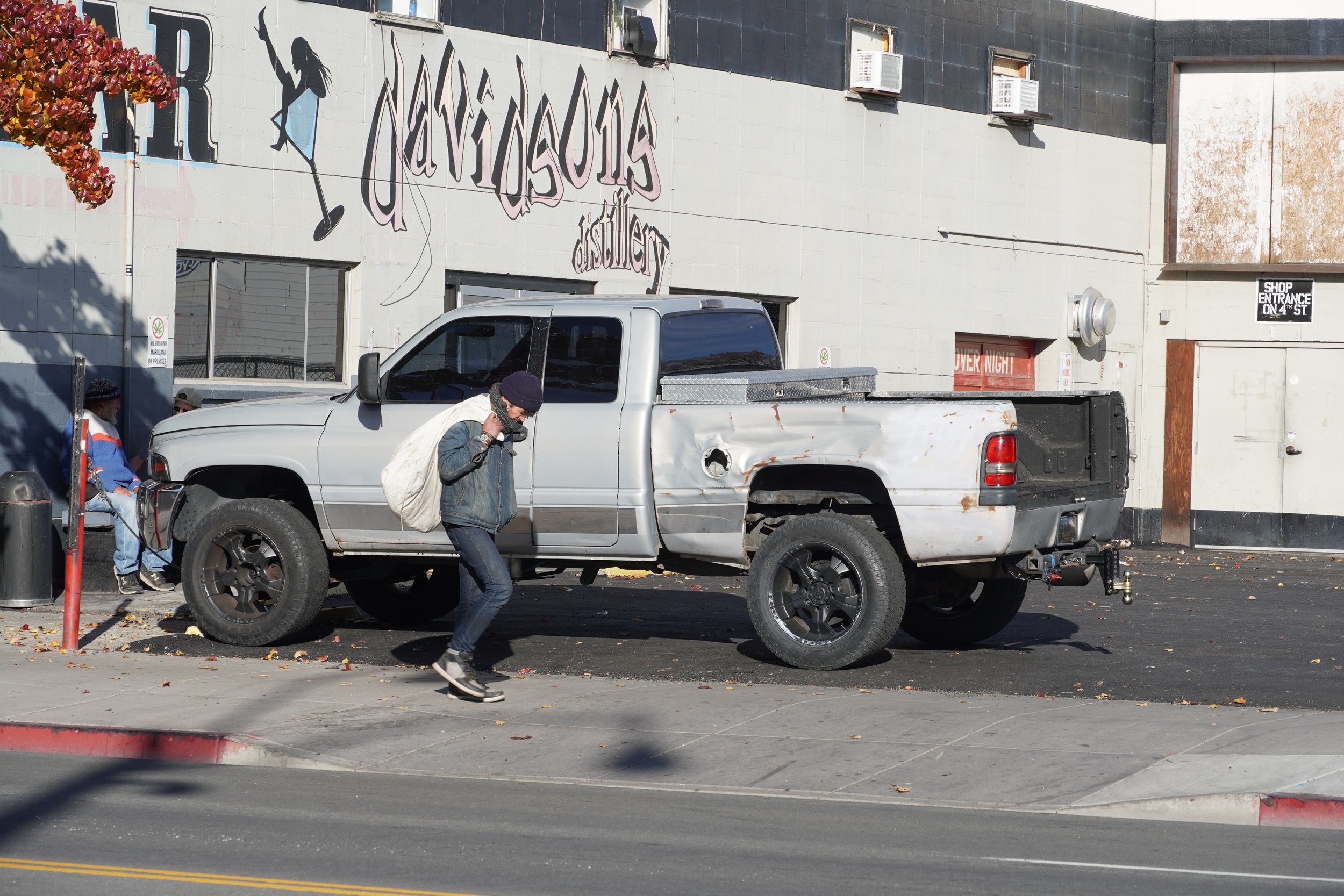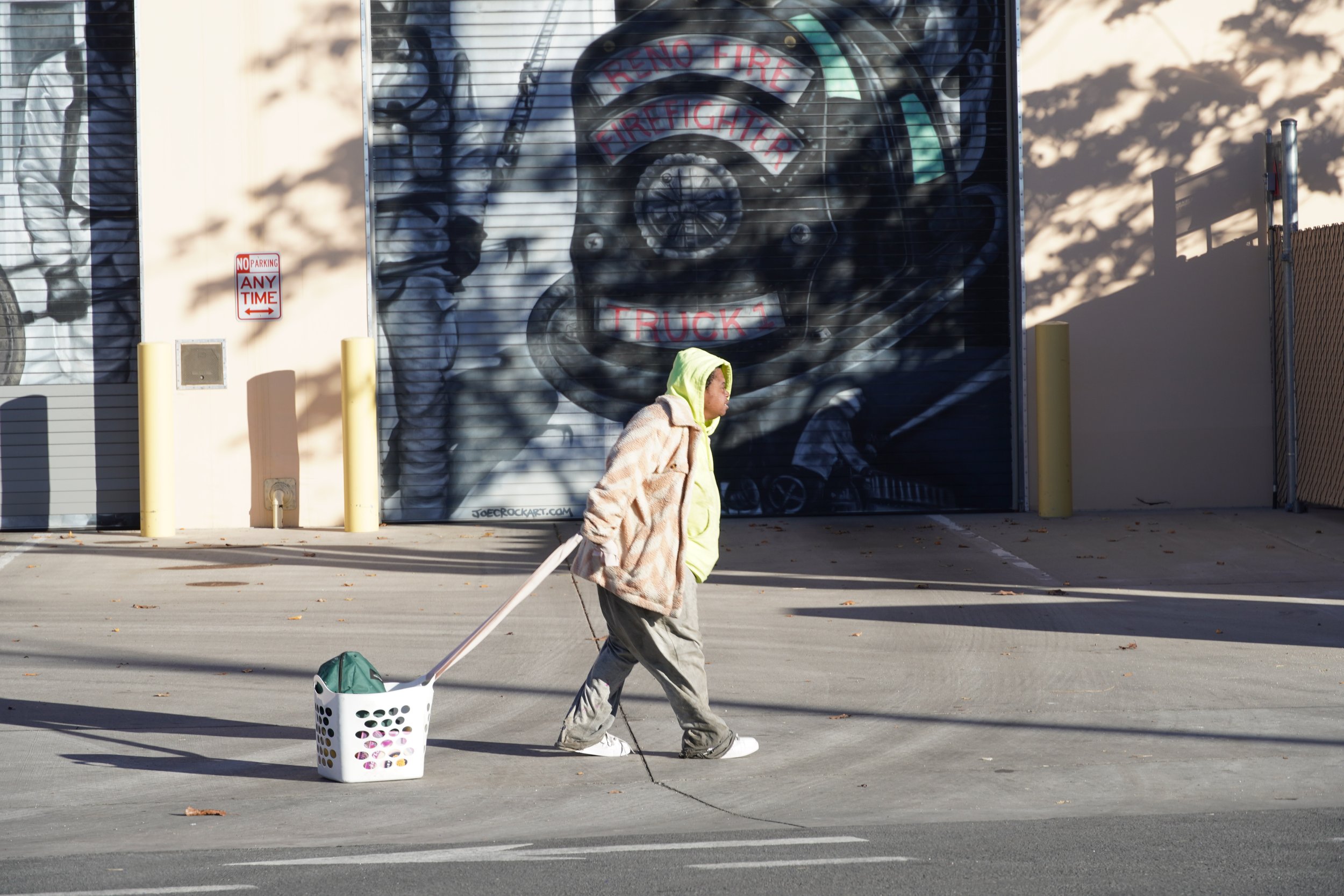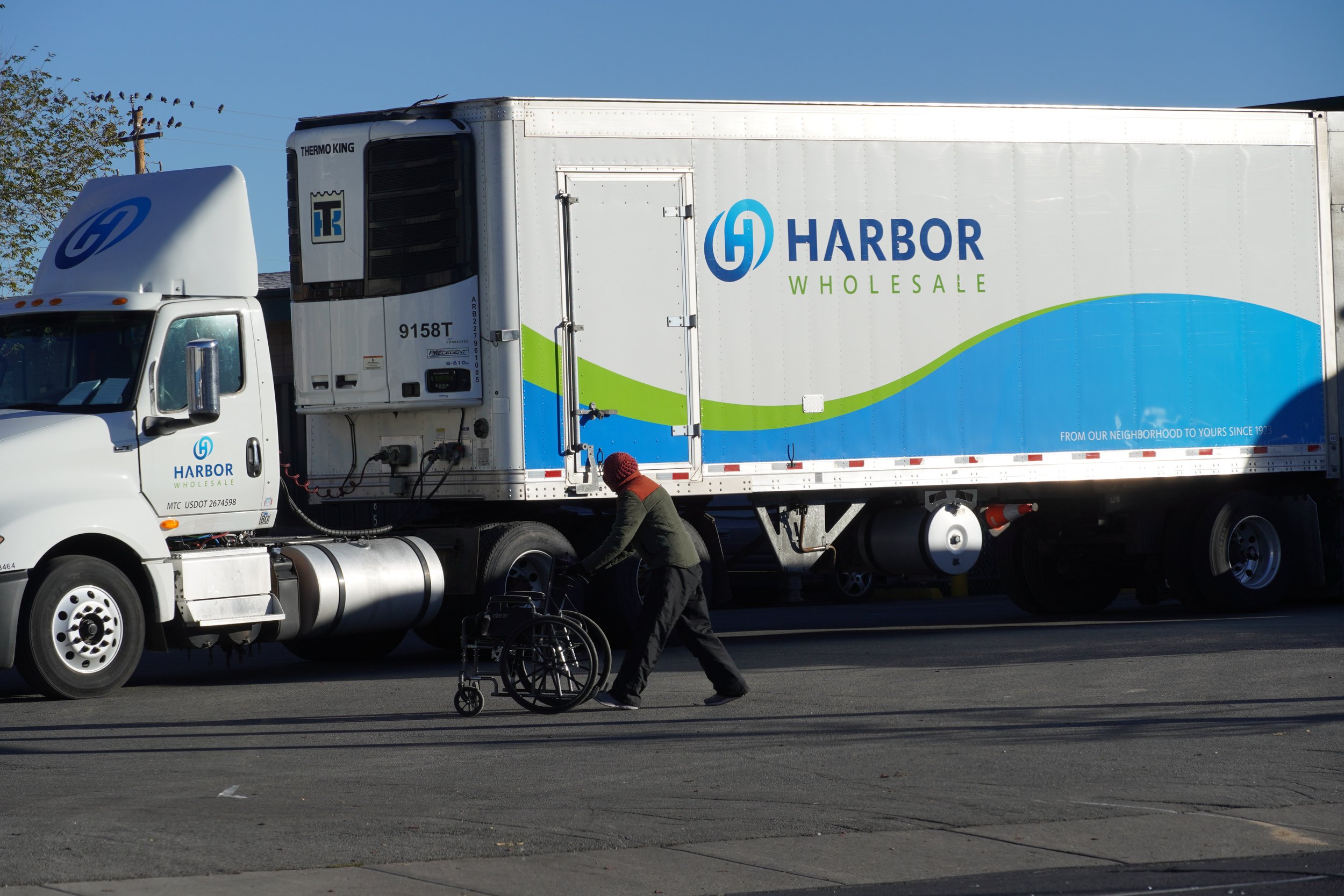While the Reno rat race starts early here, earlier than in many other cities, with commuters going to work in the early morning hours, a little later in the process, after school kids have already started their classes, the local unhoused population becomes more visible, coming out of parks, to and from the Cares Campus, along the Truckee River, on the steps of churches, at the Circle, along railroad tracks, pushing carts or pulling other contraptions.
Vagrants, transients, book readers, hustlers, teenagers, the elderly, the disabled, the displaced, the abandoned, the traumatized, the evicted, the injured at work, the abused, the middle aged, the newly divorced, the grieving, the formerly incarcerated, the refugees from conflicts elsewhere in the world, the hoarders, those with just a backpack, the California and Texas transplants, the gamblers, the addicted, the mentally unwell, the lovesick and lovestruck, the saints and sinners, the campers and squatters, the former doctors and never employed, those we have interviewed and photographed over the years in Northern Nevada without shelter run the whole gamut of the human experience.
A ragged and dusty congregation of frail souls, burdened by their internal challenges and their belongings, the unhoused are often preoccupied with their own pursuits, trying to find a friend, a few dollars, a meal, a hiding place, a spot in an administrative line or in the sun.
Some of them have an appointment in a different part of town, which depending on whether they take buses or have a bike or walk, can take hours to get to.
Their movements are often slow and deliberate, braced against the impending cold, hampered by injuries and disabilities which worsen day by day without proper care.
Some of them scream into the icy air, to no one in particular or to you standing right next to them. Their eyes can be haunted by the specter of a life full of harm and lack of trust.
Without shelter to call their own, without easy access to a bathroom or a trash can or a shower, they are vulnerable to the eyes and ears and noses of others, to the elements in general and to a city which keeps growing and gentrifying, with art washing and murals, none of which they painted themselves or got paid to paint, even though this is primarily their environment.
They are the ones who sit on public benches when these aren’t turned into hostile architecture. They are the ones who most enjoy our parks, paths and river, when they aren’t told to move along by ambassadors, police and rangers.
They are the ones who spend the most time at the downtown library when it isn’t closed for repairs or at the Senior Center when they aren’t told to go to the Cares Campus many still avoid.
They are the ones who face our wintry weather with a stoicism born from a life lived on the periphery of a society busy with consumption and getting ahead monetarily, that has for the most part forgotten their names, ignored their stories and pleas for help and try to discard them to parts where they are no longer seen. But they are here among us. They are humans just like us. They are our neighbors in need.

